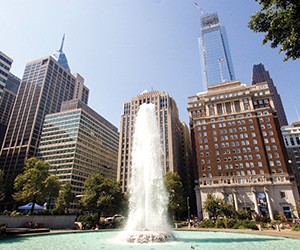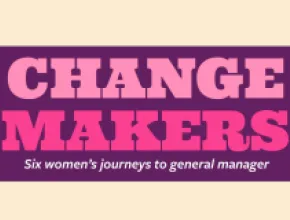SMERF meetings—standing for the social, military, educational, religious and fraternal segments of the industry—continue to be a group revenue backbone for the numerous destinations that have been courting them for decades.
Others learned during the depths of the recession just how valuable and reliable the SMERF market’s business can be.
Related Content:
SMERF Meeting Planners Share Successes and Challenges
Exploring the 'Social' Side of SMERF Meetings
Now, increased competition is causing DMOs and others to sharpen their marketing efforts to draw this market—with SMERF planners demonstrating more professionalism as well, and challenging salespeople to step up their games.
Add to these trends a diversifying landscape—the “advanced SMERF” moniker some have dubbed extensions of the traditional market, which can include sporting, special interest and multicultural groups.
Here’s a look at what’s trending in the traditional SMERF sectors, segment by segment.
Social
Destinations with a lot of social business such as weddings report a steady—and, in some cases—robust business. Lifetime events like weddings and family reunions happen no matter what the economy, they report.
Rebecca Miller, wedding specialist for Discover Newport in Rhode Island, says her area’s wedding business has increased in recent years. With popular venues such Newport’s International Tennis Hall of Fame, gilded age mansions, and rugged New England coastal scenery, the party beat carries on.
“On any given weekend April through October, we do between 30 and 50 weddings,” she says. “What has changed is the planning time. Five years ago, the standard was that a couple got engaged for up to two years, and then married. But since 2010, we’ve seen the planning time shorten to six months or less. This can put pressure on their ability to find their venues of choice.”
Some couples, Miller continues, are wising up to Friday night dates instead of the more-expensive Saturday or Sunday times.
There’s greater emphasis today, she says, on elaborate “let-loose” receptions over the marriage ceremonies.
“Food remains a really big deal, and we are doing candy buffets, cupcake bars, and late-night food buffets like mini burgers and fries,” Miller informs. “People spend freely because the events are important to them.” PageBreak
Military
Government cutbacks and increasing competition for business are impacting those who serve this sector.
The Wyndham Hotel Group considers the SMERF market “a big part of our world,” as Tim Rector, vice president of global sales describes it, because the brand includes price points in nearly every hotel sector. Wyndham garners most of its SMERF revenues in the religious, educational and military segments, which represent about 17 percent of the brand’s group business.
Wyndham’s marketing to military groups is focused on destinations like Tampa, Fla., that are near bases, but the future in this segment now has question marks because of government cutbacks, Rector says.
“As yet, we haven’t had any cancellations, and anything booked has already received approval,” he remarks. “But we are seeing less military business in the pipeline right now.”
Besides the cutbacks, there is also the element of increased competition, reports John Meroski, president and CEO of the Fayetteville CVB, in North Carolina.
With a location near Fort Bragg, home of 55,000 military personnel, and a military-friendly culture, Fayetteville relies heavily on military group events, which account for 75 percent of its group business. Vet reunions occur frequently here, especially in November when thousands of veterans gather for the annual Heroes Homecoming event.
“We have a strong military culture, 30 military museums, historic and other sites here, so a big part of our marketing goes to this segment,” Meroski says. “What we are seeing is a lot more competition for military business. Many U.S. cities didn’t market to military, but now they are after them—with lower rates.”
Educational
Competition is also affecting the educational segment of the SMERF market. Julie Coker, senior vice president, convention sales and services for the Philadelphia CVB, says educational meetings are her city’s strongest SMERF segment, but other cities are stepping up their marketing efforts and some have a more extensive lodging product as well.
“Education is our largest SMERF market,” Coker says, “but meeting planners are in the driver’s seat because there are now so many city choices. And some have more hotel inventory than we do.”
But Philadelphia does have a prime East Coast location, a famed heritage and many universities and other institutions of higher learning that draw in the sector.
“Planners can typically expect up to a 10 percent boost in attendance when they book Philly,” she says. “And we have a walkable city that doesn’t require bus or shuttle expense. Center City is filled with restaurants and cultural attractions that make us stand out.”
To meet competition from cities like Boston and Washington, D.C., Philadelphia is diversifying its SMERF marketing to include more multicultural and sporting groups that typically meet during the city’s summer “need” periods. Coker said efforts are also under way to add another citywide hotel near the convention center with up to 1,000 guest rooms. PageBreak
Religious
Religious meetings attendance has been on a steady increase over the past two years, says Dean Jones, CMP, the director of conferences and events for Religious Conference Management Association (RCMA).
Jones cited several possible reasons for the climb, including RCMA’s efforts to innovate educational programs and improve services. More regional meetings are in the offing, so attendees can drive to destinations closer to their homes.
“Planners are looking for destinations that draw in families and are affordable,” Jones says, “so they can roll the family vacation into the conference time. DMOs and venues are getting better at offering incentives like menus for budget-minded groups, discounted AV and meeting rentals, all of which helps keep costs down.”
[Related Content: Q&A With Planner Dean Jones on Bringing the RCMA to Omaha]
Some cities are offering package deals to planners, he says, rather than an “a la carte” approach. The pricing strategies represent a change from a few years ago, Jones says, when the industry didn’t really understand the segment’s needs.
“Hotels are back to a seller’s market, but in order to win business, there is more collaboration among all providers for the bottom lines to look better,” Jones says. “Part of this goes to the fact that so many faith-based planners have remained loyal to a city or property, and the sellers want to honor them for their business loyalty.”
Fraternal
Chapters of fraternal groups like the Elks and Shriners continue to meet in most any economic climate, but Kelly Sabol, an account executive for Baltimore Area Marriott hotels with expertise in the SMERF market, reports some local chapters in this sector are meeting closer to home.
“In the current economy, we are seeing more fraternal chapters book locally to save travel expenses. They are also cutting back on food and beverage choices,” Sabol says. “Larger annual events continue to book well in advance, as much as two to three years out, but smaller meetings are getting booked a year out or less.”
Sabol also reports that fraternal meeting planners seem to have more experience in the meetings process than previously.
“Meeting planners [in the fraternal segment] are now more experienced, with better understanding of the structure of the hotel sales process,” Sabol says. “They are negotiating more and requesting fewer concessions.”
Natalie Hirsch, sales manager for the Colorado Springs [Colo.] CVB, says fraternal groups are coming later in the year to save money.
“They prefer summer dates because our weather is so fantastic, but they realize they can save by getting here from late August through mid-October,” Hirsch remarks. “They also like us because our rates on everything are much lower than Denver’s.”






